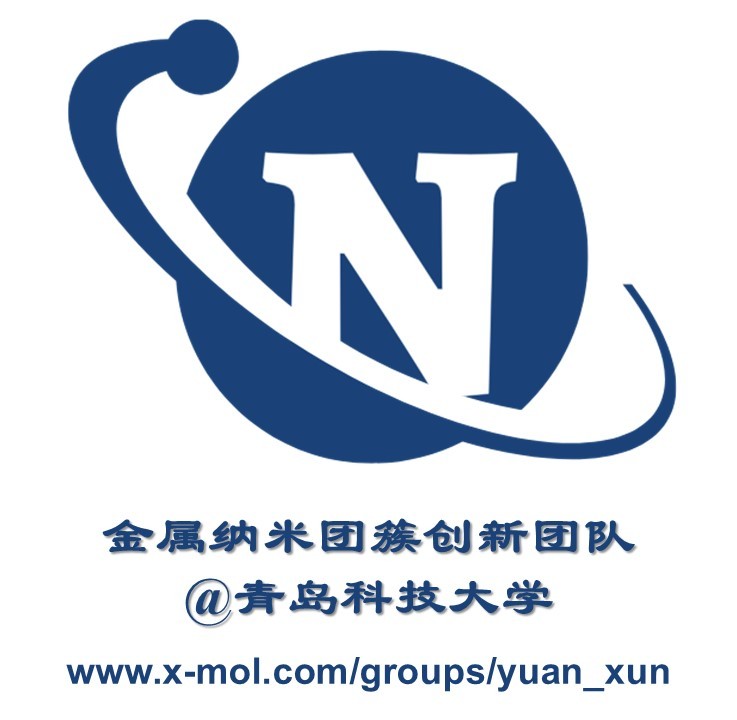
刘勇、副教授、硕士生导师。研究工作集中于超小金属纳米团簇的设计合成及其在海水淡化、杀菌方面的应用。近5 年来,获批国家自然科学基金面上项目一项、国家自然科学基金青年项目一项、山东省自然科学基金青年项目一项、青岛市自然科学基金原创探索项目一项,获得中国石油和化工科技进步三等奖一项,获批无锡新吴区“飞凤人才”和无锡“太湖人才”两级项目200万资助;以第一作者或通讯作者发表高水平SCI论文28 篇,包括Nat. Com.、Adv. Funct. Mater.、ACS Nano、Chem. Eng. J.、J. Mater. Chem. A、Sep. Purf. Technol.、Desalination、Mater. Horiz.、Small 等。其中ESI 高被引论文10余篇,被引用超过300 次论文1 篇,超过200 次论文3 篇,超过100 次论文4 篇;根据Web of Science 统计总引用次数4000 余次,H 指数36。
【项目列表】
国家自然科学基金面上项目(50万,在研)
国家自然科学基金青年项目(基于Flow-through流场的双离子嵌入型电容去离子及其动力学调控研究,24万,已结题)
山东省自然科学基金青年项目(基于Flow-through电极的双离子嵌入型电容去离子及其脱盐动力学调控机制研究,15万,已结题)
青岛市自然科学基金原创探索项目(20万,在研)
【代表性论文】
[1] Y. Liu, L. Wang, Q. Ma, X. Xu, G. Xin, H. Zhu, T. Feng, X. Dou, M. Eguchi, Y. Yamauchi, X. Yuan, Simultaneous Generation of Residue-Free Reactive Oxygen Species and Bacteria Capture for Efficient Electrochemical Water Disinfection, Nat. Commun., 2024, Accepted.
[2] Y. Liu, L. Wang, Q. Yao, X. Gao, X. Du, X. Dou, H. Zhu, X. Yuan, J. Xie, In situ synthesis of bismuth nanoclusters within carbon nano-bundles from metal-organic framework for chloride-driven electrochemical deionization, Adv. Funct. Mater., 2022, 32 2110087.
[3] Y. Liu, K. Wang, X. Xu, K. Eid, A.M. Abdullah, L. Pan, Y. Yamauchi, Recent advances in faradic electrochemical deionization: system architectures versus electrode materials, ACS Nano, 2021, 15(9), 13924-13942.
[4] L. Wang, Z. Liu, Z. Wang, Q. Ma, Z. Guo, G. Shen, K. Wang, X. Xu, Y. Liu, X. Yuan, Up-shifting the desalination rate limit of capacitive deionization via integrating chloride-capturing Bi nanocluster with flow-through cell architecture, Chem. Eng. J., 2023, 460 141726.
[5] H. Wang, Y. Liu, Y. Li, X. Xu, X. Liu, Y. Yao, T. Lu, L. Pan, Tactics for boosting the desalination stability of capacitive deionization, Chem. Eng. J., 2024, 496 153808.
[6] Z. Wang, Z. Guo, Q. Ma, G. Shen, B. Xiao, L. Zhang, Q. Li, Y. Liu, X. Yuan, Combining Bismuth nanoclusters embedded 3D carbon nanofiber Aerogels: Towards fast and ultra-durable faradic capacitive deionization, Chem. Eng. J., 2024, 482 149028.
[7] K. Wang, Y. Liu, Z. Ding, Z. Chen, X. Xu, M. Wang, T. Lu, L. Pan, Chloride pre-intercalated CoFe-layered double hydroxide as chloride ion capturing electrode for capacitive deionization, Chem. Eng. J., 2022, 433 133578.
[8] Y. Liu, X. Gao, Z. Wang, K. Wang, X. Dou, H. Zhu, X. Yuan, L. Pan, Controlled synthesis of bismuth oxychloride-carbon nanofiber hybrid materials as highly efficient electrodes for rocking-chair capacitive deionization, Chem. Eng. J., 2021, 403 126326.
[9] K. Wang, Y. Liu, X. Xu, Y. Jiao, L. Pan, In situ synthesis of ultrasmall NaTi2(PO4)3 nanocube decorated carbon nanofiber network enables ultrafast and superstable rocking-chair capacitive deionization, Chem. Eng. J., 2023, 463 142394.
[10] Z. Chen, Z. Ding, Y. Chen, X. Xu, Y. Liu, T. Lu, L. Pan, Three-dimensional charge transfer pathway in close-packed nickel hexacyanoferrate-on-MXene nano-stacking for high-performance capacitive deionization, Chem. Eng. J., 2023, 452 139451.
[11] Y. Liu, X. Du, Z. Wang, L. Zhang, Q. Chen, L. Wang, Z. Liu, X. Dou, H. Zhu, X. Yuan, MoS2 nanoflakes-coated electrospun carbon nanofibers for “rocking-chair” capacitive deionization, Desalination, 2021, 520 115376.
[12] Y. Liu, X. Gao, L. Zhang, X. Shen, X. Du, X. Dou, X. Yuan, Mn2O3 nanoflower decorated electrospun carbon nanofibers for efficient hybrid capacitive deionization, Desalination, 2020, 494 114665.
[13] Y. Liu, B. Geng, Y. Zhang, X. Gao, X. Du, X. Dou, H. Zhu, X. Yuan, MnO2 decorated porous carbon derived from Enteromorpha prolifera as flow-through electrode for dual-mode capacitive deionization, Desalination, 2021, 504 114977.
[14] Z. Liu, L. Wang, G. Shen, Z. Guo, C. Qin, X. Ni, J. Cao, X. Xu, Y. Liu, X. Yuan, Temperature-mediated in-situ formation of antimony nanoclusters inside carbon nanofibers for chloride-driven capacitive deionization, Desalination, 2023, 553 116471.
[15] Z. Guo, G. Shen, Z. Wang, Q. Ma, L. Zhang, B. Xiao, Y. Yan, Y. Zheng, Y. Liu, X. Yuan, Integrating FeOOH with bacterial cellulose-derived 3D carbon nanofiber aerogels for fast and stable capacitive deionization based on accelerating chloride insertion, Desalination, 2024, 576 117329.
[16] Z. Wang, Z. Liu, L. Zhang, Z. Guo, G. Shen, C. Xiao, Q. Li, G. Yang, Y. Liu, X. Yuan, Facial synthesis of FeOOH array-anchored carbon fiber as flow-through chloride-capturing electrode for ultrafast and super-stable capacitive deionization, Desalination, 2024, 575 117302.
[17] Z. Chen, X. Xu, Y. Liu, J. Li, K. Wang, Z. Ding, F. Meng, T. Lu, L. Pan, Ultra-durable and highly-efficient hybrid capacitive deionization by MXene confined MoS2 heterostructure, Desalination, 2022, 528 115616.
[18] G. Shen, Z. Guo, L. Zhang, Q. Ma, C. Xiao, C. Qin, H.L.H. Chong, P.Y. Moh, Y. Liu, X. Yuan, Rational design of sea urchin-like FeOOH anchored hollow carbon spheres as chloride-insertion electrodes for efficient faradic capacitive deionization, Sep. Purif. Technol., 2024, 335 126034.
[19] K. Wang, Y. Liu, Z. Ding, Z. Chen, G. Zhu, X. Xu, T. Lu, L. Pan, Controlled synthesis of NaTi2(PO4)3/Carbon composite derived from Metal-organic-frameworks as highly-efficient electrodes for hybrid capacitive deionization, Sep. Purif. Technol., 2022, 278 119565.
[20] F. Meng, X. Tu, Y. Liu, K. Wang, X. Xu, X. Liu, Z. Gong, T. Lu, L. Pan, Carbon nanotube sustained ternary-metal Prussian blue analogues for superior-performance rocking-chair capacitive deionization, Sep. Purif. Technol., 2024, 329 125155.
[21] F. Meng, Z. Ding, X. Xu, Y. Liu, T. Lu, L. Pan, Metal organic framework-derived nitrogen-doped porous carbon sustained Prussian blue analogues for efficient and fast hybrid capacitive deionization, Sep. Purif. Technol., 2023, 317 123899.
[22] Y. Liu, X. Du, Z. Wang, L. Wang, Z. Liu, W. Shi, R. Zheng, X. Dou, H. Zhu, X. Yuan, Layered double hydroxide coated electrospun carbon nanofibers as the chloride capturing electrode for ultrafast electrochemical deionization, J. Colloid Interf. Sci., 2022, 609 289-296.
[23] K. Wang, X. Du, Z. Liu, B. Geng, W. Shi, Y. Liu, X. Dou, H. Zhu, L. Pan, X. Yuan, Bismuth oxychloride nanostructure coated carbon sponge as flow-through electrode for highly efficient rocking-chair capacitive deionization, J. Colloid Interf. Sci., 2022, 608 2752-2759.
[24] L. Xu, Z. Ding, Y. Chen, X. Xu, Y. Liu, J. Li, T. Lu, L. Pan, Carbon nanotube bridged nickel hexacyanoferrate architecture for high-performance hybrid capacitive deionization, J. Colloid Interf. Sci., 2023, 630 372-381.
[25] X. Tu, Y. Liu, K. Wang, Z. Ding, X. Xu, T. Lu, L. Pan, Ternary-metal Prussian blue analogues as high-quality sodium ion capturing electrodes for rocking-chair capacitive deionization, J. Colloid Interf. Sci., 2023, 642 680-690.
[26] H. Wang, M. Jiang, G. Xu, C. Wang, X. Xu, Y. Liu, Y. Li, T. Lu, G. Yang, L. Pan, Machine Learning-Guided Prediction of Desalination Capacity and Rate of Porous Carbons for Capacitive Deionization, Small, 2024, n/a(n/a), 2401214.
[27] F. Meng, Y. Liu, Z. Ding, L. Xu, H. Wang, X. Xu, X. Liu, T. Lu, L. Pan, Hydrogen-Bonded Organic Framework Derived 2D N, O Co-Doped Carbon Nanobelt with Tunable Pseudocapacitive Contribution for Efficient Capacitive Deionization, Small, 2024, 20(21), 2309353.
[28] L. Xu, Y. Liu, Z. Ding, X. Xu, X. Liu, Z. Gong, J. Li, T. Lu, L. Pan, Solvent-Free Synthesis of Covalent Organic Framework/Graphene Nanohybrids: High-Performance Faradaic Cathodes for Supercapacitors and Hybrid Capacitive Deionization, Small, 2023, n/a(n/a), 2307843.
[29] Y. Liu, Y. Zhang, Y. Zhang, Q. Zhang, X. Gao, X. Dou, H. Zhu, X. Yuan, L. Pan, MoC nanoparticle-embedded carbon nanofiber aerogels as flow-through electrodes for highly efficient pseudocapacitive deionization, J. Mater. Chem. A, 2020, 8(3), 1443-1450.
[30] Y. Liu, X. Gao, K. Wang, X. Dou, H. Zhu, X. Yuan, L. Pan, Rocking-chair capacitive deionization with flow-through electrodes, J. Mater. Chem. A, 2020, 8 8476-8484.
[31] K. Wang, Y. Liu, Z. Ding, Y. Li, T. Lu, L. Pan, Metal–organic-frameworks-derived NaTi2(PO4) 3/carbon composites for efficient hybrid capacitive deionization, J. Mater. Chem. A, 2019, 7(19), 12126-12133.
[32] Y. Liu, X. Xu, M. Wang, T. Lu, Z. Sun, L. Pan, Nitrogen-doped carbon nanorods with excellent capacitive deionization ability, J. Mater. Chem. A, 2015, 3(33), 17304-17311.
[33] Y. Liu, T. Lu, Z. Sun, D.H. Chua, L. Pan, Ultra-thin carbon nanofiber networks derived from bacterial cellulose for capacitive deionization, J. Mater. Chem. A, 2015, 3(16), 8693-8700.
[34] Y. Liu, L. Pan, X. Xu, T. Lu, Z. Sun, D.H. Chua, Carbon nanorods derived from natural based nanocrystalline cellulose for highly efficient capacitive deionization, J. Mater. Chem. A, 2014, 2(48), 20966-20972.
[35] Y. Liu, X. Xu, M. Wang, T. Lu, Z. Sun, L. Pan, Metal–organic framework-derived porous carbon polyhedra for highly efficient capacitive deionization, Chem. Commun. (Cambridge, U. K.), 2015, 51(60), 12020-12023.
[36] Y. Li, Y. Liu, M. Wang, X. Xu, T. Lu, C.Q. Sun, L. Pan, Phosphorus-doped 3D carbon nanofiber aerogels derived from bacterial-cellulose for highly-efficient capacitive deionization, Carbon, 2018, 130 377-383.
[37] Y. Liu, T. Chen, T. Lu, Z. Sun, D.H. Chua, L. Pan, Nitrogen-doped porous carbon spheres for highly efficient capacitive deionization, Electrochim. Acta, 2015, 158 403-409.
[38] Y. Liu, L. Pan, T. Chen, X. Xu, T. Lu, Z. Sun, D.H. Chua, Porous carbon spheres via microwave-assisted synthesis for capacitive deionization, Electrochim. Acta, 2015, 151 489-496.
[39] Y. Liu, L. Pan, X. Xu, T. Lu, Z. Sun, D.H. Chua, Enhanced desalination efficiency in modified membrane capacitive deionization by introducing ion-exchange polymers in carbon nanotubes electrodes, Electrochim. Acta, 2014, 130 619-624.
[40] Y. Liu, S. Wang, Z. Wang, Q. Yao, S. Fang, X. Zhou, X. Yuan, J. Xie, The in situ synthesis of silver nanoclusters inside a bacterial cellulose hydrogel for antibacterial applications, J. Mater. Chem. B, 2020, 8 4846-4850.
